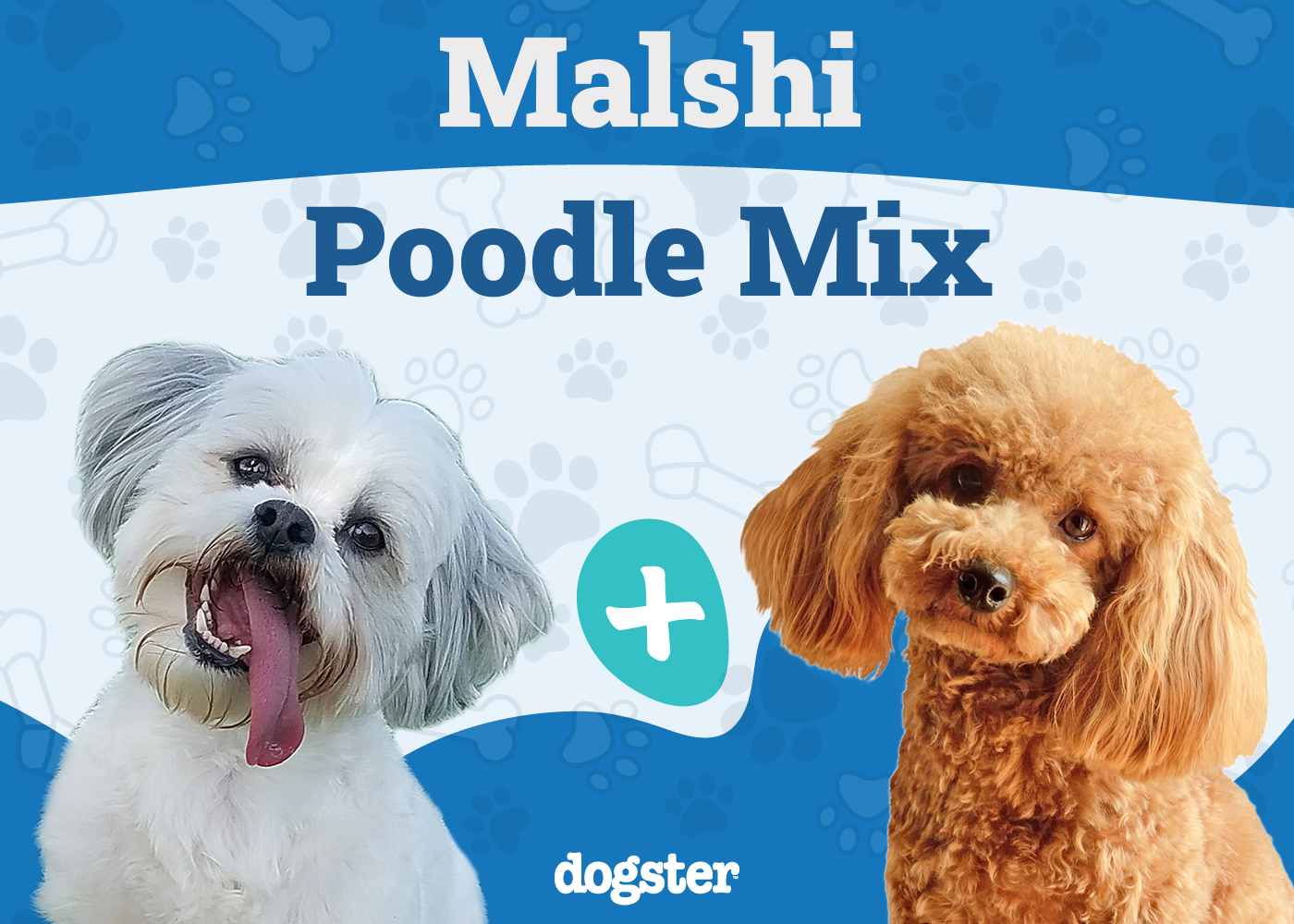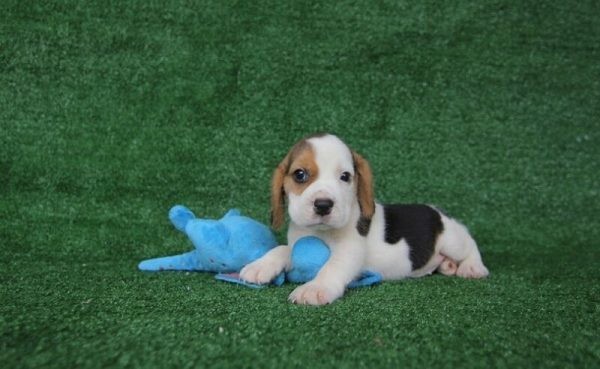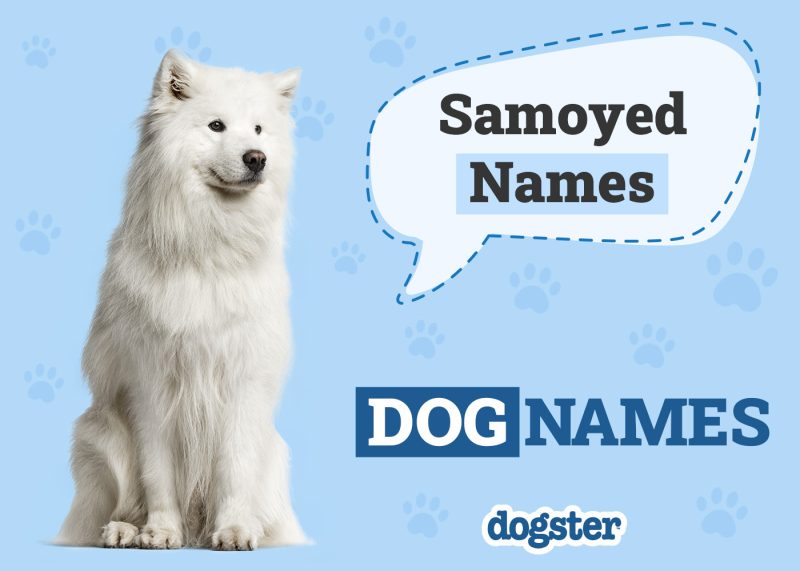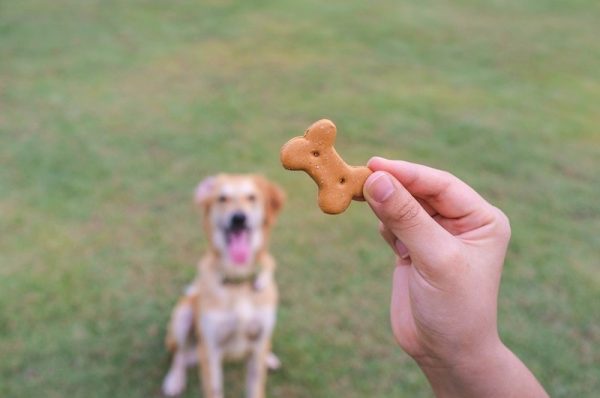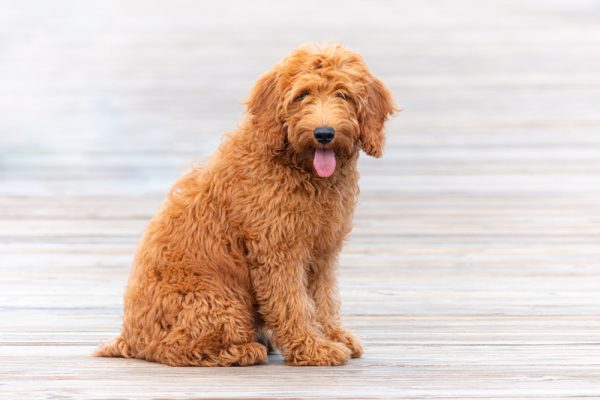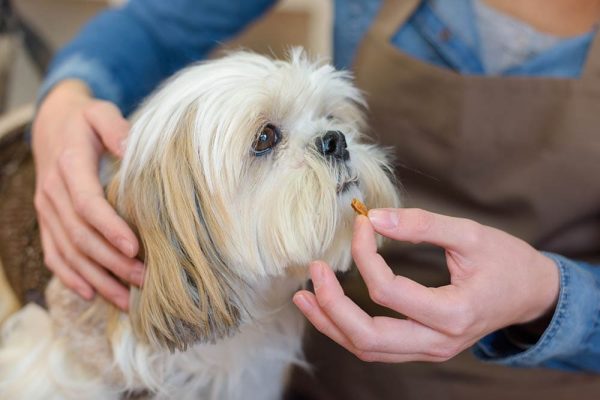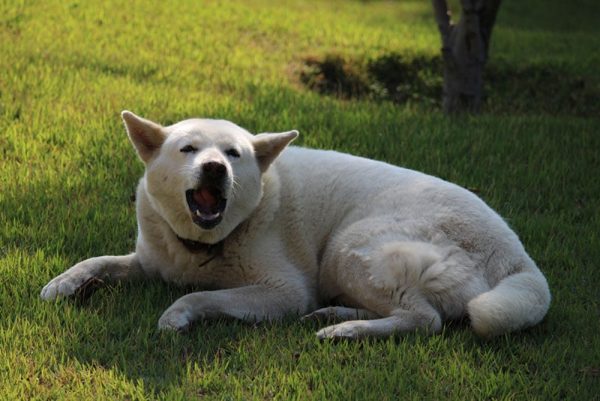In this article
View 8 More +Small dogs standing less than 14 inches in height and weighing no more than 20 pounds, Shmoodles are excellent companion pets that are playful and fun without being overly energetic. Unlike many active dogs, Shmoodles only need moderate amounts of exercise and don’t require a lot of space.
They’re very affectionate pups that want attention and love, though they do have a tendency to get a bit demanding and bossy if their needs are too freely met.
Breed Overview
Height:
10–14 inches
Weight:
8–20 pounds
Lifespan:
12–16 years
Colors:
Black, white, tan, brown, cream, red, sable, apricot
Suitable for:
Families and individuals that want a loving, low-shedding dog
Temperament:
Alert, active, loyal, smart, trainable, vocal, playful, affectionate
If you’ve never heard of a Shmoodle, you’re not alone. This is a designer breed that’s relatively new to the scene. You won’t find them on any registries, but if you manage to locate one for purchase, you’ll likely have an excellent pet with some very desirable qualities.
If you want to learn more about this relatively unknown designer breed, keep reading as we discuss the ins and outs of caring for a Shmoodle.
Shmoodle Characteristics

Shmoodle Puppies
Shmoodle puppies are surprisingly affordable. Just don’t get them confused with Schnoodles, which are far costlier pooches. Not many reputable breeders are focusing on Shmoodles, especially because they’re rather low-cost dogs. As such, you’ll want to take a look at the environment in which your pup has been raised to get a good idea of what kind of care the breeder offers its dogs. If possible, try to see the mother so you can also get a feel for what you might be able to expect in your dog’s future.
You will love the Schmoodle if you’re looking for a loving companion that sheds less than other breeds.
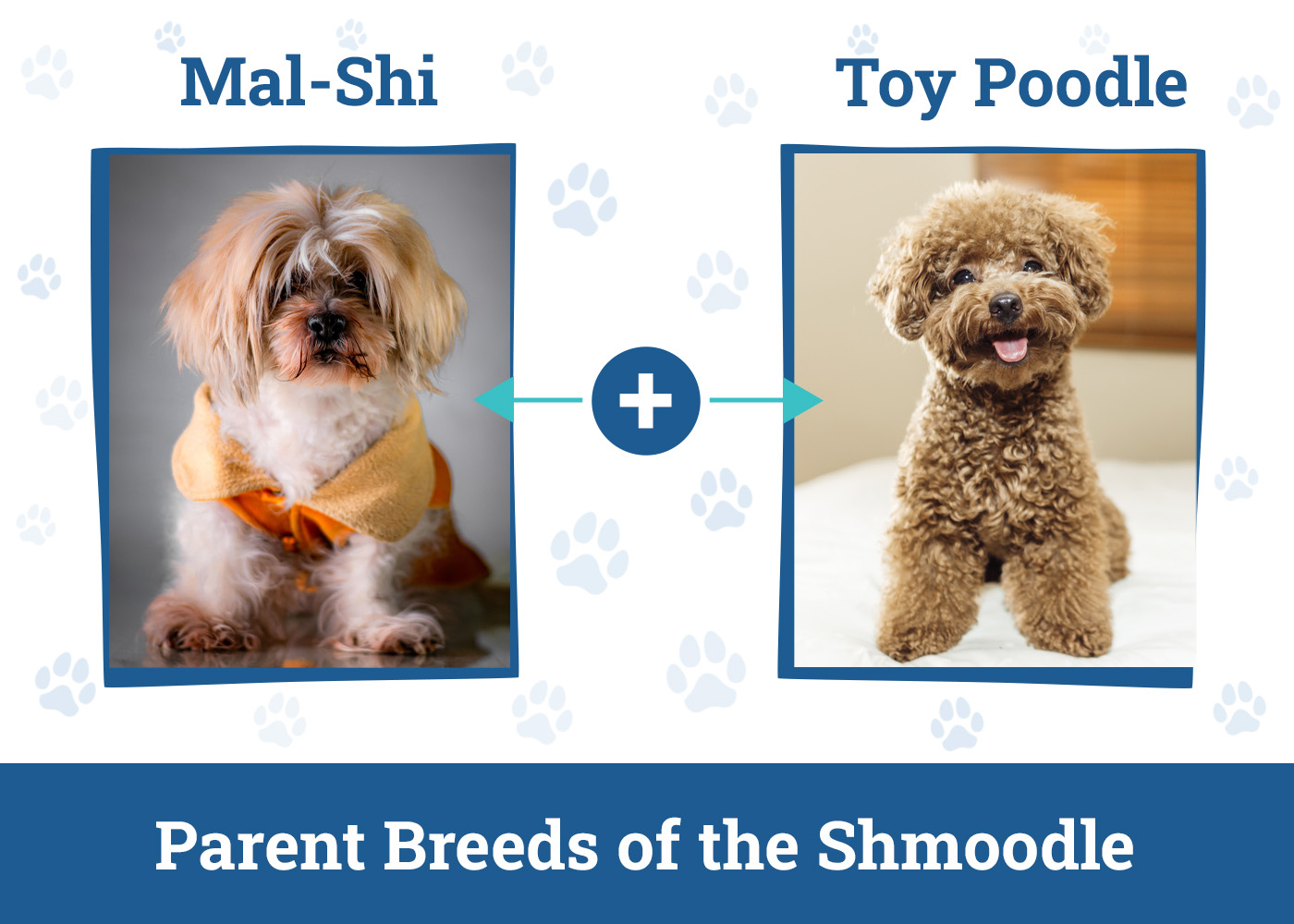

Temperament & Intelligence of the Shmoodle
All three parent breeds of the Shmoodle are beloved and popular companion pets due to their affectionate, playful, and friendly natures. The Shmoodle didn’t fall far from the tree, exhibiting some of the best traits shown by all three breeds. Shmoodles are highly intelligent like their Toy Poodle parents, which helps to make them easily trainable.
Additionally, they’re highly affectionate and loving just like Shih-Tzus and Maltese. If you’re looking for a dog that will happily curl up in your lap at any time, then the Shmoodle is a great fit.
Are These Dogs Good for Families?
One of the great things about Shmoodles is that they’re friendly with just about everybody. Don’t expect your Shmoodle to be much of a watchdog, but you can count on it to try and be best friends with everyone it meets. This makes the Shmoodle an ideal family pet since it can get along famously with every member of the household.
Shmoodles are even great with kids, but you’ll have to make sure your kids understand to be careful with the dog. It is easy for a child to accidentally hurt a Shmoodle because of the breed’s small size.
Does This Breed Get Along with Other Pets?
Shmoodles come from a long line of companion pets. They don’t have much hunting instinct left within them. You’re unlikely to see a strong prey drive in your Shmoodle, and as generally friendly dogs all the way around, your Shmoodle should get along fine with other pets.
Just make sure to socialize your dog often from an early age and get them used to the idea of being around other animals so it doesn’t get scared or nervous.

Things to Know When Owning a Shmoodle:
Food & Diet Requirements
As a small breed, Shmoodles won’t eat too much. They also don’t have any particular dietary needs that you’ll need to meet. That said, they are prone to obesity due to their small size, so make sure that you don’t overfeed your Shmoodle. They’ll do well on high-quality dog food that’s specifically formulated for small breeds.
Look for a blend with glucosamine and chondroitin in it or supplement them in the form of a joint chew since Shmoodles are susceptible to hip dysplasia.
Exercise
While Shmoodles have plenty of energy, they’re not overly energetic. They have just enough energy to be playful and active, but not so much that you need to spend an hour each day wearing them out. Rather, you’ll be fine with one or two short walks during the day. All your Shmoodle needs is a chance to stretch its legs. It doesn’t even need a large yard.
Because they’re so small, Shmoodles do well even in smaller living situations such as apartments and even tiny homes.
Training
One thing that draws many to the Shmoodle is how easy they are to train. These dogs are highly intelligent and really want to please their owners, which is a great combination when it comes time to train. Shmoodles are smart enough to know what’s being asked of them and they have the desire to do what their owner wants.
Even for an inexperienced dog trainer, a Shmoodle is a great dog to get started with.
Grooming ✂️
Shmoodles can have a range of coats. Yours could have a coat that’s wavy or locked into tight curls. The coat could be short, long, or anything in between. Most of them are low shedders, though some might shed a moderate amount. Still, their upkeep isn’t as bad as you might think from appearances. Just brush your Shmoodle’s coat a few times a week to prevent matting and tangling. You’ll also want to make sure to regularly wipe your Shmoodle’s tears as they are prone to tear staining.
Aside from that, all your Shmoodle will require are the basics. Keep its nails trimmed and make sure its ears get cleaned out from time to time. These dogs don’t require too much in the way of grooming and maintenance.
Health and Conditions
One of the major benefits often afforded to designer breeds is a reduced susceptibility to particular health concerns that affect either parent breed. The idea is that if you mix two breeds that aren’t vulnerable to the same illnesses, you’ll reduce the chance of the offspring having the illnesses that commonly affect those breeds.
In some cases, this seems to work, though, in the case of the Shmoodle, there are still quite a few health concerns that you’ll need to keep an eye out for.
- Patellar Luxation
- Hypothyroidism
- Hypoglycemia
- Bloat
- Hip dysplasia
- Epilepsy
Minor Conditions
- Patellar Luxation: Small breeds are most susceptible to patellar luxation, which is a kneecap that can slip out of place. While it doesn’t always have a serious impact on the affected animal, it can lead to arthritis and lameness. For dogs with serious luxation, surgery might be necessary, though pain-relievers and joint supplements are generally the only necessary treatment for most dogs.
- Hypothyroidism: The thyroid is responsible for regulating metabolism with a hormone called thyroxine. A dog with hypothyroidism has a thyroid that isn’t functioning properly and can’t produce enough thyroxine to meet the demands of the metabolism. You might first notice symptoms of hair loss, a dull coat, flaky skin, weight gain, muscle loss, slow movement, and ear infections. Luckily, it can be easily treated and controlled with oral medications that your dog will need to take for the remainder of its life.
- Hypoglycemia: Hypoglycemia is the medical term for low blood sugar. Dogs with hypoglycemia will experience massive decreases in energy levels and could even pass out. They may have a loss of appetite or increased hunger. Anxiety, shivering, heart palpitations, and seizures are also possible signs of hypoglycemia.
Serious Conditions
- Bloat: Bloat is the common name for a condition known medically as gastric dilatation-volvulus complex or GDV. This is a serious emergency for any affected canine that causes the stomach to fill with air, building pressure until blood flow from the rear of the dog is prevented and the dog goes into shock. Sometimes, the stomach can even flip. This causes the spleen and pancreas to be dragged out of place, and the pancreas will become oxygen-starved, forcing it to produce toxic hormones that can stop the heart, killing the dog.
- Hip dysplasia: Hip dysplasia is a relatively common condition in dogs that starts when they’re young. It causes the hip and femur to form incorrectly, and the hip joint becomes loose. Over time, the bone and cartilage wear down, atrophying the muscles, reducing mobility, and even causing arthritis. While it is highly common in larger breeds, hip dysplasia is still quite prevalent in small breeds as well.
- Epilepsy: Affecting nearly 1% of the canine population, epilepsy is the most common neurological order that dogs suffer. This disease causes unprovoked and recurring seizures due to a brain abnormality.
See also: all the other poodle mixes here.

Male vs Female
Physically, there is very little difference between male and female Shmoodles. With a three-way mix like the Shmoodle, there are a lot of variances between individuals; more so than between sexes. However, temperamentally, there are some notable differences between males and females.
Females tend to be the more intelligent Shmoodles. This is accompanied by a more independent nature. They’re also generally more protective and less affectionate than males. While females can be playful, males are usually far more playful than females. Males will also seek out attention and give it more freely. You also won’t often see those independent or stubborn qualities in a male that are quite common in females.
3 Little-Known Facts About the Shmoodle
1. Shmoodles Are a Three-Way Mix
Most designer breeds are a specific cross of two purebred dogs. Shmoodles are a bit more unique. Instead of just two breeds involved in the mix, Shmoodles are made up of three distinct breeds: Poodles, Maltese, and Shih Tzus. Technically, the Shmoodle is a cross between a Mal-Shi and a Toy Poodle.
Of course, Mal-Shi puppies are a cross between a Maltese and a Shih-Tzu, so if you want to breed your own Shmoodle, it is going to take a few steps.
2. They’re Considered to Be Hypoallergenic
If you’re a person who suffers from dog allergies but still loves dogs, you might be looking for a hypoallergenic canine who you hope won’t have the same effect on your allergies. Luckily, Shmoodles are considered to be hypoallergenic pups, and it is no surprise when you look at their lineage. All three parent breeds of a Shmoodle are hypoallergenic dogs.
Most Shmoodles will shed little if at all, though some might be moderate shedders. Their coats can vary from short to moderately long, but most Shmoodles will have minimal impact on allergy sufferers. Still, if you’re hoping a Shmoodle will be the solution to your pet allergies, you should go and visit a Shmoodle before purchasing it to see how it will affect you.
3. They Tend to Be Quite Vocal
The small stature of the Shmoodle makes them a great candidate for apartment living. However, they have another trait that your neighbors won’t be too pleased about. Shmoodles tend to be quite vocal. They like to yap, bark, and whine rather loudly. You’ll see a Shmoodle making noise to voice pleasure and displeasure alike. You can definitely mitigate this issue with proper training from a young age, but it’s still a natural tendency shared by Shmoodles that you’ll want to be aware of before bringing one home.
Final Thoughts
Shmoodles are a bit rare and few people even know what they are. Even so, they make great companion pets. These dogs are loving, affectionate, smart, and trainable. They tend to be alert and active without being overly energetic, so you won’t have to spend too much time exercising your Shmoodle and they don’t need large yards to roam around. Shmoodles will do fine in apartment-sized spaces, but their tendency toward being vocal might annoy your neighbors. Still, a bit of training can reduce the noise your Shmoodle is making, turning it into an excellent apartment pooch.
There’s a lot to love here, so long as you aren’t hoping for a running companion or a guard dog. Shmoodles are neither of these, but they are amiable and enjoyable canines that make great pets for individuals and families who want a low-shedding, hypoallergenic dog with lots of love and a playful demeanor.
See Also:
